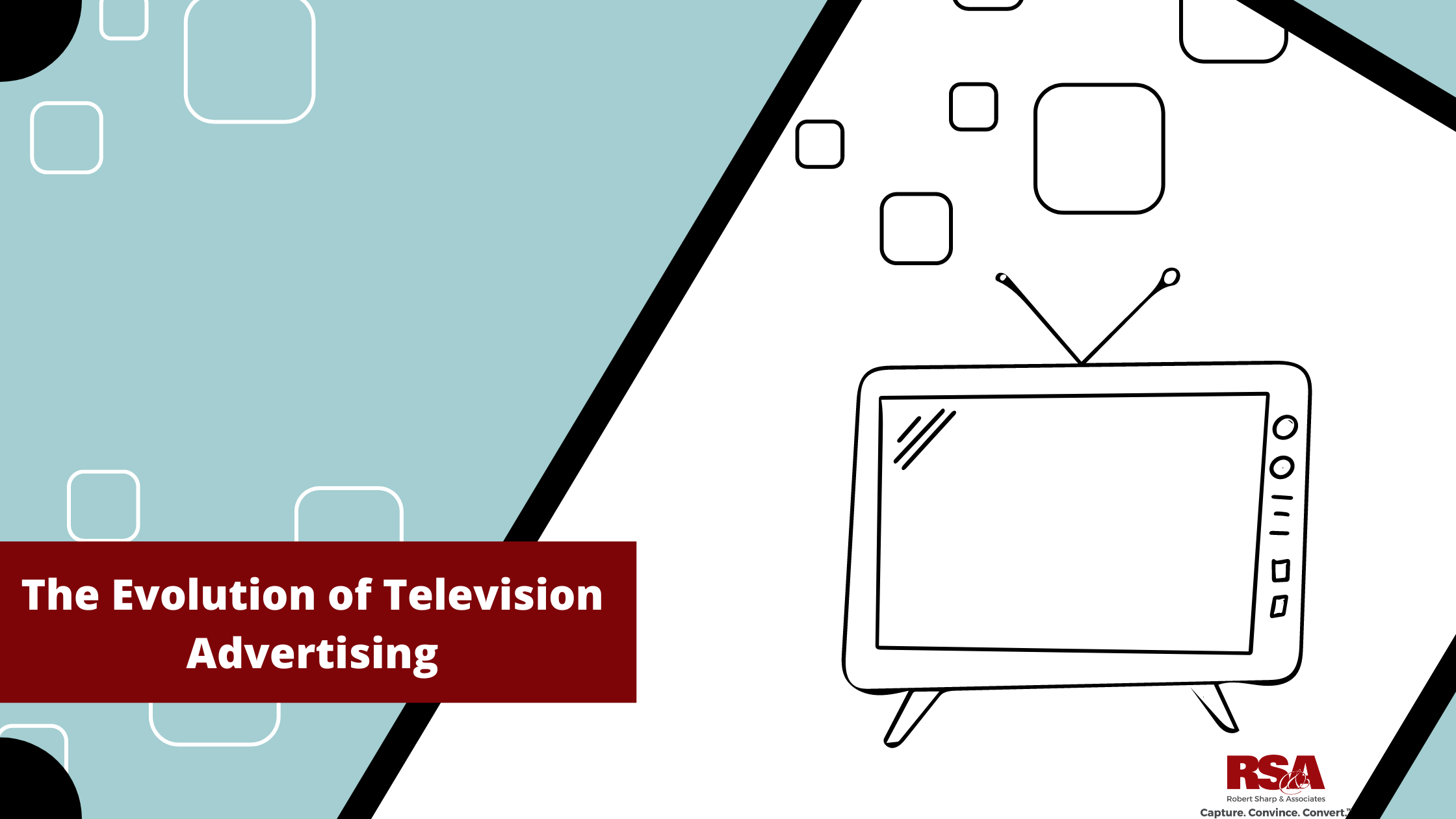The Evolution of Television Advertising
– By #RSA

The RSA team is back with another marketing history lesson for you. Today, we are going to be diving into the history of television advertising. Most young people today probably don’t even have a cable box and get all their television from various streaming services. But, I bet if you asked your parents and grandparents they remember when televisions came out and started appearing in households all over the place!

Television advertising started in May of 1941 when the Federal Communications Commission (FCC) granted commercial licenses to 10 stations in the US. That July, the Bulova watch company aired the first ever commercial and it cost a whopping nine dollars! But prices didn’t stay cheap for long. With color television, more channels, and the ability to increase the distribution of messaging, television advertising quickly grew in to the billion dollar industry we recognize it as today.
Just ten years after the first television commercial aired for Bulova tv ad spending had reached $128 million! In 1953, television could be watched in color which further increased advertising dollars and just two years after color television launched, the ad spending on television had reached $1 billion! Despite the large success of television advertising, there were some bumps in the road. In 1971 Congress placed a ban on advertising for cigarette companies on both television and radio. This loss in advertisers lost the broadcast business $220 million in advertising funds!
As we all know, television commercials are more than about just selling a product. Many commercials invoke an emotion and some are even newsworthy. The first commercial to really make an impact like this was in 1984. Apple introduced their Macintosh computer during the third quarter of the Super Bowl with a $500,000 television spot. This was the first time the Super Bowl has been turned into a major ad event, and now the cost for a 30-second tv spot during the Super Bowl is over six million dollars!

Since the inception and growth of online streaming services, television advertising has drastically evolved. In 1994, internet advertising arrived and web ad spending had reached $300 million by the mid 1990s. Between the years of 1997-2011, Netflix, TiVo, YouTube, Hulu, and Amazon all launched online streaming platforms. By 2017, the top video subscription services reached $15 billion in monthly fees alone! Since then, we have seen a steady decrease in television advertising spend, as many advertisers are choosing to spend money to advertise on various streaming services. However television advertising still generates over $68 billion annually, so television advertising certainly isn’t dead. Television advertising remains popular because it allows advertisers to grab viewer’s attention and be creative with their advertisements. They also utilize multiple senses to reach viewers and hold their attention. Television advertisements also have the ability to deliver a complex message across in a short period of time.
While we at RSA are certain there are more changes to come in the television advertising industry, we still believe it is an integral part of a multi-faceted marketing campaign.
Last Modified:


